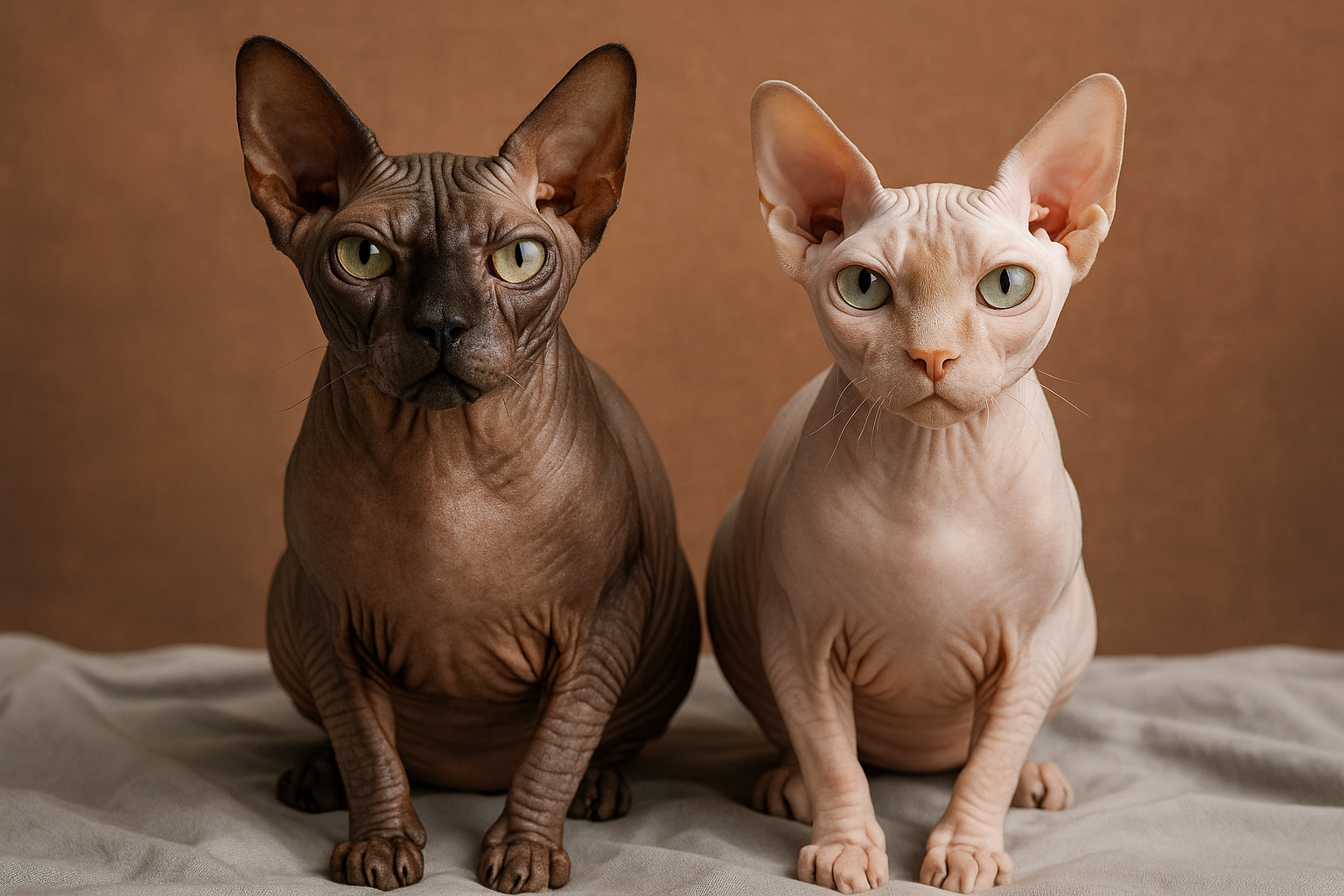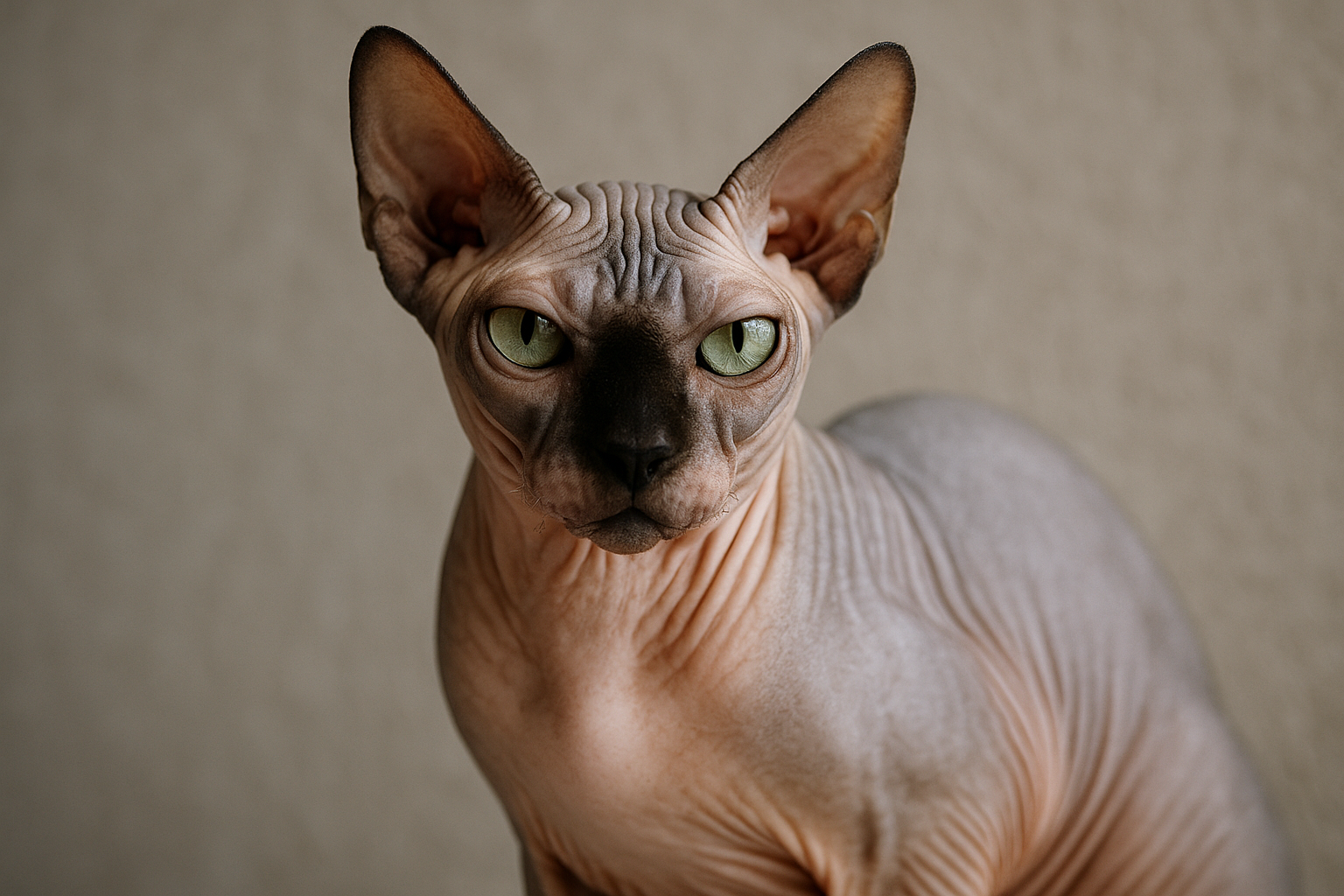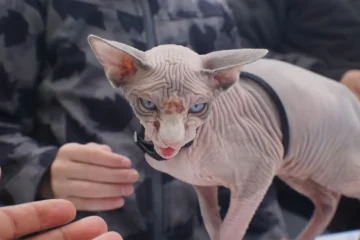Ever touched a hairless cat and thought, “Wow, that feels greasy”? You’re not imagining things. If you’re thinking about getting a hairless cat or already have one, you’ve probably wondered if all these cats have oily skin.
The honest answer? Yes, pretty much all hairless cats have oily skin. But before you panic, let me explain why this happens and how to deal with it.
Why Do Hairless Cats Feel So Oily?
Think about your own hair for a second. When you don’t wash it for a few days, it gets greasy, right? That’s because your scalp produces natural oils. Well, cats have the same thing going on.
Regular cats produce these oils too, but their fur soaks it up like a sponge. It’s like having a built-in towel that spreads the oil around and keeps their skin from feeling slick.
Hairless cats? They don’t have that furry towel. So all those natural skin oils just sit there on their skin, making them feel oily and sometimes even a bit sweaty to touch.
It’s not gross or unhealthy – it’s just how their bodies work without fur to help out.
Which Hairless Cats Are the Oiliest?
Not all hairless cats are created equal when it comes to oil production. Here’s what you can expect:
Sphynx Cats These guys are the champions of oily skin. Most Sphynx owners will tell you their cats feel like warm, slightly greasy rubber. They need baths every week or two, no joke.
Donskoy Cats Also pretty oily, especially in their wrinkled areas like around the face and neck. Those wrinkles can trap oil, so they need extra attention during bath time.
Peterbald Cats Here’s where it gets interesting. Some Peterbald cats have a bit of peach fuzz or even short hair. The more hair they have, the less oily they feel. The completely bald ones are just as oily as Sphynx cats.
Other Hairless Breeds Breeds like Bambino or Elf cats (which are often mixed with Sphynx) usually have the same oily skin issues.
What Makes Some Cats Oilier Than Others?

Just like people, every cat is different. Here’s what can affect how oily your hairless cat gets:
What They Eat Good food can actually help control oil production. Some owners notice their cats get greasier or less greasy depending on their diet.
How Old They Are Young cats tend to be oilier. As they get older, their skin might change.
Their Health Sick cats or cats with hormonal problems might have different oil levels.
The Weather Hot, humid days can make cats produce more oil. Dry winter air might make them compensate by getting even oilier.
Just Their Genetics Some cats are naturally greasier than others, even from the same litter.
What It’s Really Like Living with an Oily Hairless Cat
Let’s be real about what you’re signing up for:
Bath Time is Regular Time Forget what you know about cats hating water. Hairless cats NEED baths. We’re talking once a week or every two weeks. It’s not optional – it’s necessary.
Skip too many baths and your cat will start to smell, get skin problems, or leave oily marks on everything they touch.
Everything Gets Greasy Your cat’s oils will transfer to whatever they touch. Cat beds, blankets, your couch, even cat sweaters – they’ll all need washing more often than you’d expect.
You Become a Skin Inspector Without fur hiding everything, you’ll need to check your cat’s skin regularly. Look for blackheads (yes, cats get them), dry patches, or any weird spots.
Special Products Required You can’t just use any old shampoo. Hairless cats need gentle, cat-specific products that won’t irritate their sensitive skin.
How to Handle the Oily Skin
Don’t worry – managing oily skin isn’t rocket science. Here’s what works:
Set Up a Bath Schedule Start with weekly baths and adjust from there. Some cats need more, some can go a bit longer. Use lukewarm water and be gentle.
Get the Right Shampoo Ask your vet for recommendations. Look for gentle, hypoallergenic formulas made for cats. Never use human products.
Sometimes They Need Moisturizer Sounds weird for oily skin, right? But sometimes over-bathing can make skin too dry, causing it to produce even more oil. A tiny bit of cat-safe moisturizer can help.
Feed Them Well Quality food with good fats can help their skin stay healthy. Some owners swear that switching foods helped their cat’s oil production.
Keep Your House Comfortable Extreme temperatures make cats’ skin work harder. Try to keep things consistent.
Common Mistakes People Make
“If I Bathe Them More, They’ll Be Less Oily” Nope! Over-bathing strips their skin, making it produce even more oil to compensate. Stick to a regular schedule.
“Oily Skin Means They’re Dirty” Not true. It’s completely natural and actually protects their skin.
“All Hairless Cats Need Exactly the Same Care” Every cat is different. What works for your friend’s Sphynx might not work for yours.
When Oily Skin Becomes a Problem
Usually, oily skin is just part of life with hairless cats. But sometimes you need to worry:
Acne and Blackheads Yes, cats get pimples too. Usually around the chin and base of the tail. Regular cleaning helps prevent this.
Bacterial Infections If oil and dirt build up too much, bacteria can cause problems. This is why regular baths matter.
Fungal Issues Warm, moist, oily skin can sometimes develop fungal problems if not kept clean.
Bad Smells If your cat smells bad even after a recent bath, something might be wrong.
Seasonal Changes
Your cat’s skin might change with the seasons:
Winter: Indoor heating dries the air, which might make their skin produce more oil.
Summer: Heat and humidity can increase oil production.
The key is staying consistent with care year-round.
Red Flags to Watch For
Call your vet if you notice:
- Sudden changes in how oily your cat gets
- Red, irritated, or inflamed skin
- Strong smells that won’t go away
- Your cat scratching more than usual
- Any new bumps, spots, or growths
The Money Talk
Before getting a hairless cat, budget for:
- Special shampoos and skincare products
- More frequent laundry
- Possible vet visits for skin issues
- Time for regular grooming
The Good News
Yes, hairless cats need more work than regular cats. But here’s the thing – most owners wouldn’t trade them for anything.
These cats often become super bonded with their people, partly because of all the handling during grooming. They’re warm, affectionate, and once you get used to their skin, many people find it comforting.
Plus, no fur means no shedding and fewer allergens for some people.
Bottom Line
So, are all hairless cats oily? Pretty much, yeah. But it’s not a dealbreaker if you know what you’re getting into.
The oily skin isn’t a flaw or a health problem – it’s just how these cats are built. With regular baths, the right products, and a bit of patience, it becomes just another part of caring for your unique pet.
If you’re considering a hairless cat, be honest with yourself about whether you can commit to the extra grooming. If you already have one, embrace the oily skin as part of what makes your cat special.
Remember, every hairless cat is different. Some are oilier than others, and it might take some trial and error to figure out exactly what your cat needs. When in doubt, talk to your vet – they can give you personalized advice for your specific situation.
The most important thing? Don’t let the oily skin scare you away from these amazing cats. With proper care, it’s totally manageable, and the love you’ll get in return makes every bath worth it.




